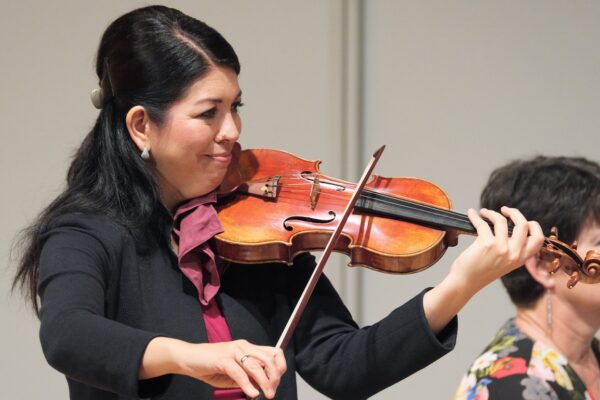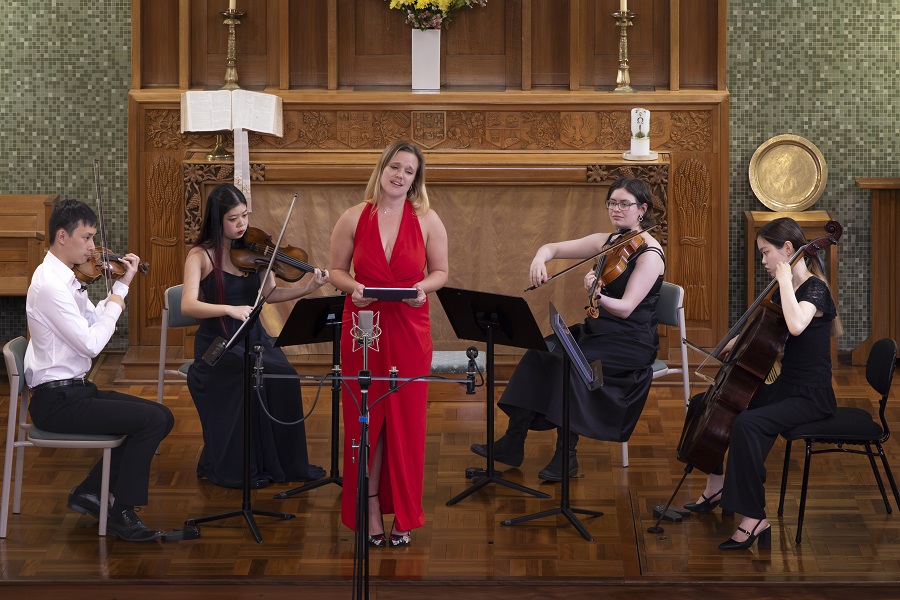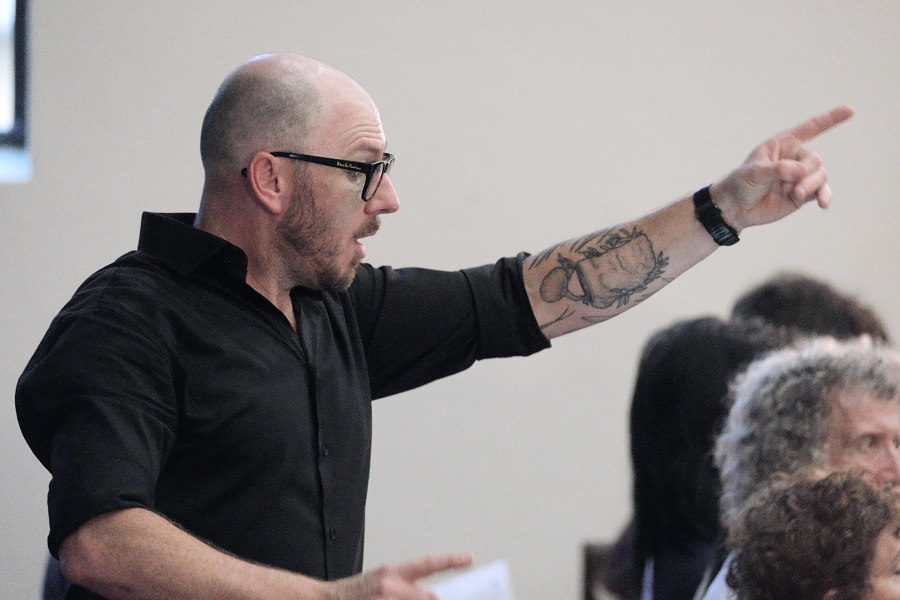
Music / Jewels in the Crown, Selby & Friends. At Fairfax Theatre, National Gallery of Australia, July 12. Reviewed by ROB KENNEDY.
Can a piece of music be considered a valuable treasure? The question was answered in Selby & Friends’ latest concert, Jewels in the Crown.
The performers were Lloyd Van’t Hoff on clarinet, who is a founding member of the wind quintet Arcadia Winds. With Natalie Chee on violin, who as of 2019, became the concertmaster of the Gürzenich Orchestra in Cologne, and Kathryn Selby, a renowned performer and recording artist.
They opened with the Clarinet Sonata No.2 in E flat Major, Op.120, by Johannes Brahms. From a pastoral beginning, it was not long before the fireworks start. Then it settled back into a plaintive mode, before changing again.

Van’t Hoff is an animated player. With suggestive facial expressions and constant body movement, he’s quite a dynamo. Which makes his playing all the more expressive.
It’s hard to fit the first movement into a known style. Its mellow surface is constantly altered by bursts of fortissimos that startle. It seemed to be following an action, like movie music. This style continued right up until the final section, where a contemporary jazz-like section took over with a surprisingly new sound for the time.
Béla Bartók’s six Romanian Dances for Violin, Clarinet and Piano (arr Andrew Howes) followed. Armed with two instruments each, Chee and Van’t Hoff took the stage with Selby on piano. Moving straight into these beguiling dances, idiosyncratic, like all of Bartók’s music, these short works, performed with great liveliness, crossed the gamut of sound and construction.
Folk and classical influences infused the music with a romantic sound and a genuine joy of life. Each player bit into the music with vigour and sparkle. What a performance.
Another work by Bartók, this time his Contrasts for Piano, Violin and Clarinet Sz.111. In three parts, the violin and clarinet were like free agents, yet it’s all highly constructed. The musical language was bold, surprising and highly colourful.
Like a three-way conversation, the players weaved a dialogue, and each had something new and exciting to say. Again, outstanding playing, especially when they changed instruments.
To finish this brilliant and unusual program, Beethoven’s mighty Kreutzer, Sonata for Violin & Piano No. 9 in A Major, Op. 47. The Kreutzer is a monster work. It’s big, it’s powerful and it’s scary.
With the scope and dynamic of a violin concerto, this sonata breathes fire and fury. Its forthrightness makes the word bold seem like an understatement. Selby was smack in the zone, making it sound orchestral. Chee was perhaps slightly understated in dynamic, but still showed command and finesse.
In the slow, quieter second movement, Chee’s sound shone through. The subtlety and seduction just oozed out of her violin. The final movement is a joy because it’s so well constructed. Each section flows into the next as a seamless join.
Without a doubt, Selby and Friends proved that this collection of music is a valuable treasure.
Who can be trusted?
In a world of spin and confusion, there’s never been a more important time to support independent journalism in Canberra.
If you trust our work online and want to enforce the power of independent voices, I invite you to make a small contribution.
Every dollar of support is invested back into our journalism to help keep citynews.com.au strong and free.
Thank you,
Ian Meikle, editor




Leave a Reply